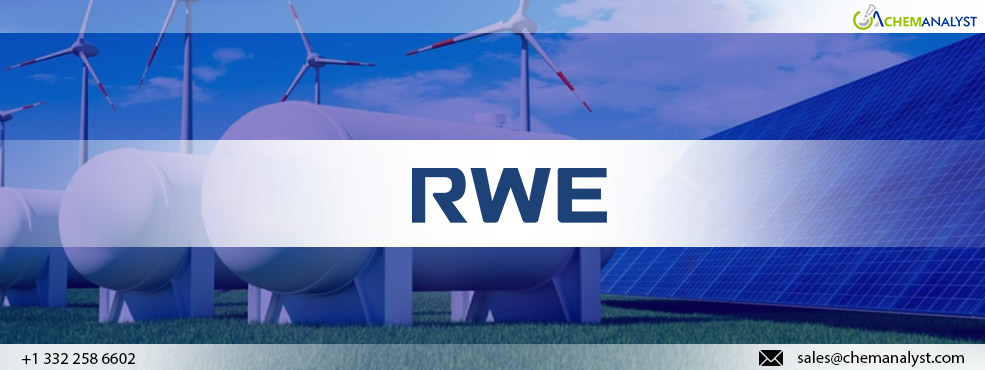RWE Starts 14-MW Pilot Electrolyser in Germany for Green Hydrogen Production
- 14-Aug-2024 10:10 PM
- Journalist: Sasha Fernandes
RWE has inaugurated a 14-megawatt pilot electrolyzer facility in Lingen, Germany, marking a significant step towards large-scale green hydrogen production. In attendance at the launch were high-level government officials, including Federal Minister for Economic Affairs and Climate Action Robert Habeck and Lower Saxony’s Minister President Stephan Weil. This pioneering project will generate invaluable data for the development of future industrial-scale green hydrogen plants, accelerating the transition to a low-carbon economy.
The facility at RWE’s Emsland gas-fired power plant boasts a 14-megawatt (MW) capacity and can produce up to 270 kilograms of green hydrogen per hour using renewable electricity. Equipped with two distinct electrolysis technologies, this pilot plant aims to offer valuable insights for future large-scale hydrogen production. Nearby, construction is underway for the first major commercial electrolyser plant, part of the GET H2 Nukleus project. A 100-MW electrolyser is set to be operational by 2025, with plans to expand its capacity to 300 MW by 2027, further advancing hydrogen production capabilities.
The company has secured substantial financial backing for its hydrogen initiatives. A recent €8 million investment from the Lower Saxony Ministry for the Environment, Energy, and Climate Protection to support the operation of a new pilot electrolyzer. Moreover, the firm has garnered over €490 million in combined federal and state funding to scale up production with a 300-MW electrolyzer under the GET H2 Nukleus program. RWE utilizes the pilot plant to gather critical insights for the development and operation of industrial-scale hydrogen systems. The pilot electrolyser features two sub-systems: a 10-MW alkaline electrolyser provided by Sunfire and a 4-MW proton exchange membrane (PEM) electrolyser designed and built by Linde, using technology from ITM Power.
Initially, the hydrogen produced at the pilot plant will be used to supplement the fuel for the power plant’s unit D gas turbine as part of a detailed testing program. Starting in mid-2025, the plant will also provide hydrogen for fueling vehicles, with the construction of a hydrogen filling station and trailer filling facility already underway at the Emsland gas-fired power plant.
Markus Krebber, CEO of RWE AG, expressed excitement about the Lingen site, emphasizing its pivotal role in Germany’s energy transition. He highlighted that, in addition to managing a flexible gas-fired power plant and a cutting-edge large-scale battery system, RWE is now producing green hydrogen at Lingen. Krebber outlined plans to expand green hydrogen production to better support industrial consumers in their decarbonization efforts. Krebber praised the collaboration with partner companies and teams, noting that the vision for a comprehensive hydrogen economy is beginning to materialize at Lingen.
Robert Habeck, Federal Minister for Economic Affairs and Climate Action emphasized the significance of supporting hydrogen across the entire value chain as a major step towards achieving a climate-neutral and sustainable economy in Germany. He highlighted the collaborative efforts between federal and state governments to establish favorable conditions for climate-neutral economic growth. Habeck expressed confidence that electrolysers, such as the one at the Lingen site, will play a crucial role in the successful energy transition.
RWE, in collaboration with key partners, is actively involved in the GET H2 initiative, which aims to establish Germany's first publicly accessible hydrogen infrastructure. The GET H2 Nukleus project will link green hydrogen production facilities in Lingen with industrial consumers across Lower Saxony and North Rhine-Westphalia via a 130 km hydrogen grid extending from Lingen to Gelsenkirchen. This grid will be the first in the regulated sector to offer transparent pricing and non-discriminatory access, significantly accelerating the hydrogen economy and aiding industries and mobility sectors in achieving their climate goals.



